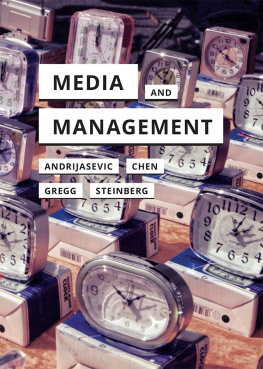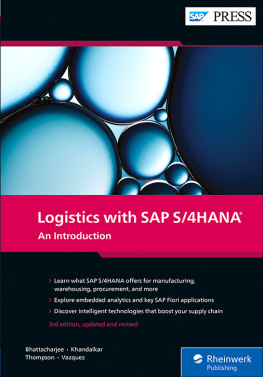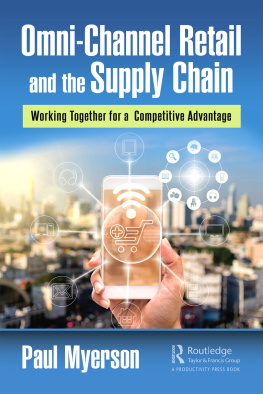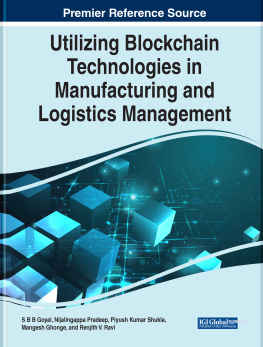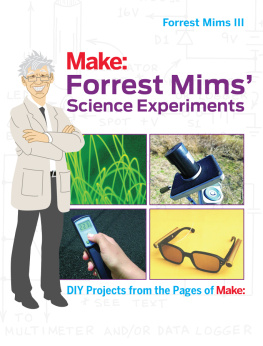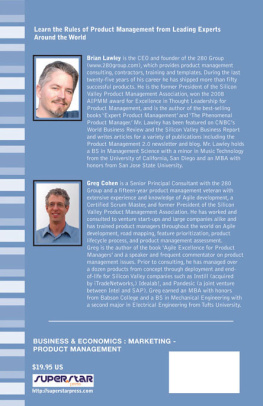Contents
Guide
Our global economy runs on logistics. Mims expertly demystifies this secretive science as he vividly portrays the ways in which it often robs the most vulnerable workers of their health and humanity.
Brad Stone, author of The Everything Store and Amazon Unbound
With the elegance and efficiency of a first-rate tech journalist, Mims leads us into the nooks and crannies, robots, AI, warehouses, and ships that are highly complex so as to make our daily life simple. A must-read.
Scott Galloway, professor of marketing at NYU Stern School of Business and author of The Four and The Algebra of Happiness
A meticulously and presciently rendered account of the surprising journey of a USB charger from the factory to my home. Its nice to get your stuff fast. But Mims asks us to ponder, Was it worth it?
Steve LeVine, author of The Powerhouse
Adeptly draws us into the container ships, fulfillment centers, and algorithms that deliver us what we want, when we want it. A balanced, much-needed account.
Robert Kanigel, author of The One Best Way and Hearing Homers Song
Mims elegantly explores the micro and the macro of how our modern world of stuff works, in a way that illuminates, dazzles, and sometimes terrifies.
Rose George, author of Ninety Percent of Everything, Nine Pints, and The Big Necessity
A backstage pass into the twenty-first-century global economy, Arriving Today is the resource for understanding how modern supply chains really workand why they sometimes fail.
Ryan Petersen, CEO of Flexport
Finally, a book that sheds light on automation, logistics, and their impact on our everyday life today, and in the future. An engaging and insightful narrative.
Oren Etzioni, professor emeritus at the University of Washington and CEO of the Allen Institute for Artificial Intelligence
Arriving Today is the essential key to understanding how our world is getting smaller and more interconnected by the day.
Garry Tan, cofounder of Initialized Capital
Captures the reality, complexity, and human side of the final milegenerally the largest cost for logistics companiesand the reader gets a real glimpse into what it takes.
Jack Levis, senior director of industrial engineering, UPS
ARRIVING TODAY . Copyright 2021 by Christopher Mims. All rights reserved under International and Pan-American Copyright Conventions. By payment of the required fees, you have been granted the nonexclusive, nontransferable right to access and read the text of this e-book on-screen. No part of this text may be reproduced, transmitted, downloaded, decompiled, reverse-engineered, or stored in or introduced into any information storage and retrieval system, in any form or by any means, whether electronic or mechanical, now known or hereafter invented, without the express written permission of HarperCollins e-books.
Cover design by Amanda Weiss
Cover photographs Getty Images
FIRST EDITION
Library of Congress Cataloging-in-Publication Data
Names: Mims, Christopher, author.
Title: Arriving today : from factory to front doorwhy everything has changed about how and what we buy / Christopher Mims.
Description: First edition. | New York, NY : Harper Business, an imprint of Harper Collins Publishers, [2021] | Includes bibliographical references and index.
Identifiers: LCCN 2021018564 (print) | LCCN 2021018565 (ebook) | ISBN 9780062987952 (hardcover) | ISBN 9780062987969 (ebook)
Subjects: LCSH: Delivery of goods, | Shipment of goods. | Business logistics. | Electronic commerce. | Amazon.com (Firm)
Classification: LCC HF5761 .M56 2021 (print) | LCC HF5761 (ebook) | DDC 388/.044dc23
LC record available at https://lccn.loc.gov/2021018564
LC ebook record available at https://lccn.loc.gov/2021018565
Digital Edition SEPTEMBER 2021 ISBN: 978-0-06-298796-9
Version 07172021
Print ISBN: 978-0-06-298795-2
For Shep
Contents
I f Ive done my job, the book youre holding is a skeleton key. It should help you unlock insights into the past, present, and future of automation and work. It should provide a window into the lives of the people who are most affected by the rapidly changing ways we buy, sell, and transport the billions of dollars worth of stuff we consume every day. And it should tell you something about your own lifewhy everyone remains so busy despite the conveniences and instant gratification we have created for ourselves.
These might seem like unusual topics for a book that traces the path of an everyday object from the factory in which it was created, in Southeast Asia, to the front door of a home in the United States. But it turns out that something as seemingly mundane as next-day delivery could not happen without many of the most transformative technologies developed in the past one hundred years. Explaining how tapping a button on your phone yields pretty much any consumer good you could want, at your doorstep, within twenty-four hours also necessitates explaining how all the innovations that make it possibleand the people who use themcome together in a planetary-scale clockwork mechanism whose behavior is impossible to understand without building it up from its smallest constituent parts.
The landscape of technologies and systems well traverse ranges from the sublimethe solution of impossible mathematical problems, the nanotechnology of microchipsto the mundanethe perfection of highways, shipping containers, the architecture of large ships, management of ports, and the speedup of all manual and mental labor.
Along the way, youll become convinced, I hope, of this astonishing fact: You live inside a factory. We all do. And you are also a worker inside that factory. As are we all. When any one of us orders something online and has it delivered to our door, we are making ourselves the end point of a conveyance system pioneered by, among others, Henry Ford. Just as he optimized the flow of parts and automobiles through his factories, we have all optimized the flow of goods, both necessary and aspirational, into our homes and lives.
In the twenty-first century, how things get to us matters as much as how theyre made. With the manufacturing of even a single object spread across ever more intermediary stages, factories, and countries, in many ways the supply chain and the factory floor are now indistinguishable. Adding you, the consumer, to the equation and molding your behavior to make it more compatible with this system, through algorithms and marketing tricks, is trivial compared to all the effort that comes before you click the Buy button.
By dumb luck, I managed to put myself at the start of the journey of an item, in a factory in Vietnam, at the very moment the global Covid-19 pandemic was just getting started in China. The pandemic stretched the supply chain described in this book to its very limit and beyond. Trends that might have taken a decade were compressed into a span of a few months. Virtually overnight, we were all checking our phones daily, looking for that little notification: Arriving Today. So, to add yet another thread to this book, you also get to see the accelerated transformation of the worlds supply chains from the inside, as it happened, and as I witnessed it firsthand.
Where before the odd item here or there might have been delivered to our doors, with the onset of lockdowns, suddenly it was almost everything. From toilet paper to sweatpants, webcams to groceries, whatever we could order without going outside, we did. Simultaneously, millions of people who lost their jobs switched careers and became part of the supply chains of the next-day delivery upon which the rest of us relied. This book is the story of both sides of that equation. It explores the lives of people who make supply chains possible and of those who designed them in the first place. As such, its also an exposition of the underlying drivers of Americas growing inequality in wealth, income, and rights in the workplace.


